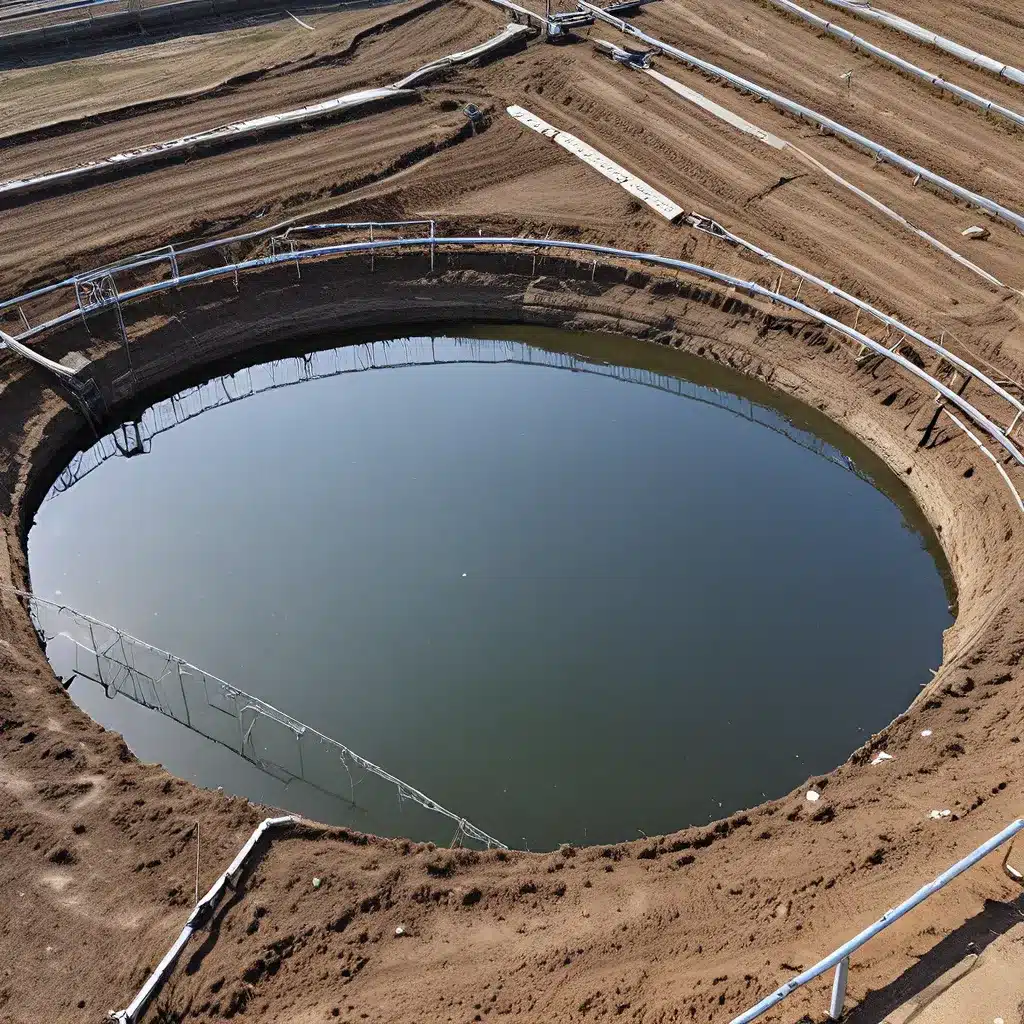
I’ll never forget the day I first learned about the incredible potential hidden in our wastewater. It was during a visit to a water treatment plant, and as I watched the process unfold, I couldn’t help but be struck by the sheer amount of valuable resources being flushed away. Nutrients, energy, even clean water – all of it, seemingly gone to waste. But what if we could recapture and repurpose those resources? The idea intrigued me, and I soon found myself on a journey to uncover the cutting-edge solutions that are transforming wastewater into a treasure trove of valuable products.
Unlocking the Hidden Wealth in Our Wastewater
Picture this: every time you flush the toilet or wash your dishes, you’re sending a veritable bounty of nutrients straight down the drain. Nitrogen, phosphorus, and potassium – the very same elements that make commercial fertilizers so effective – are all present in our wastewater, just waiting to be harvested. And we’re not just talking about a few trace amounts; these nutrients are found in surprisingly high concentrations, providing a potentially abundant and sustainable source.
Recent research has shown that as much as 30% of the world’s fertilizer needs could be met by recovering the nutrients from wastewater. That’s a remarkable statistic, especially when you consider the environmental and economic impacts of traditional fertilizer production, which is often energy-intensive and relies on finite, non-renewable resources.
But the benefits of nutrient recovery go far beyond just fertilizer production. By transforming wastewater into a valuable resource, we can not only reduce waste and pollution, but also generate new revenue streams and support the development of a circular economy. It’s a win-win-win situation, and it’s why so many researchers, engineers, and environmental innovators are dedicating their efforts to advancing nutrient recovery technologies.
Innovative Solutions for Nutrient Extraction
So, how do we actually extract these valuable nutrients from wastewater? The answer lies in a diverse array of cutting-edge technologies, each with its own unique approach.
One promising method is the use of electroactive anaerobic membrane bioreactors (EAMBRs), which combine anaerobic digestion with electrochemical processes to selectively recover nutrients like nitrogen and phosphorus. Researchers at the University of California, Los Angeles are currently exploring this technology, with the goal of transforming municipal wastewater into a source of fertilizers and clean water.
Another innovative solution is bipolar membrane electrodialysis, which uses an electric field to separate and concentrate nutrients from the wastewater stream. Studies have shown that this method can efficiently recover up to 95% of the phosphorus and 80% of the nitrogen present in wastewater, making it a highly promising approach.
But the ingenuity doesn’t stop there. Researchers are also exploring the use of microalgae cultivation, anaerobic digestion, and even electrochemical technologies to extract a wide range of valuable products from wastewater, including biofuels, bioplastics, and clean water. The possibilities are truly endless, and the potential benefits to both the environment and the economy are staggering.
Transforming the Water Treatment Industry
As these innovative technologies continue to evolve and gain traction, the water treatment industry is undergoing a remarkable transformation. Gone are the days of simply treating wastewater and disposing of the resulting sludge; now, the focus is on maximizing resource recovery and turning wastewater into a valuable commodity.
Projects funded by the U.S. Department of Energy’s Office of Energy Efficiency and Renewable Energy are at the forefront of this revolution. From the University of Chicago’s work on using artificial intelligence to optimize nutrient and water recovery, to the University of Michigan’s low-energy biomembrane filtration process, the industry is rapidly embracing the power of innovation to create a more sustainable future.
But it’s not just the tech giants and research powerhouses that are driving this change. Communities and local governments are also getting in on the action, partnering with water treatment facilities to implement resource recovery systems and create new revenue streams. Take the example of the South Platte Renew facility in Honolulu, Hawaii, which is working with Kennedy Jenks Consultants to reinvent the traditional wastewater treatment plant into a “Resource Recovery Center” that produces valuable fertilizers and energy.
The Path to a Circular Economy
As exciting as these advancements are, it’s important to remember that the journey towards a truly sustainable, circular economy is still very much a work in progress. There are challenges to overcome, from scalability and cost-effectiveness to regulatory hurdles and public perception.
But the potential rewards are simply too great to ignore. By transforming wastewater into a source of valuable resources, we can reduce our reliance on finite, non-renewable materials, while also mitigating the environmental impact of traditional waste management practices. It’s a vision of a future where our wastewater is no longer seen as a problem to be solved, but rather as a valuable asset to be harnessed.
And as I continue to explore the cutting-edge technologies and innovative partnerships that are driving this transformation, I can’t help but feel a sense of optimism and excitement. Because when you consider the sheer scale of the opportunity – the millions of tons of nutrients, the countless gallons of clean water, the untapped energy potential – it’s clear that the future of wastewater management is not just about treatment, but about transformation.
So, let’s raise a glass (of reclaimed water, of course) to the visionaries and pioneers who are leading the charge towards a more sustainable, circular future. Because when it comes to the untapped wealth of our wastewater, the only question that remains is: what are we waiting for?


